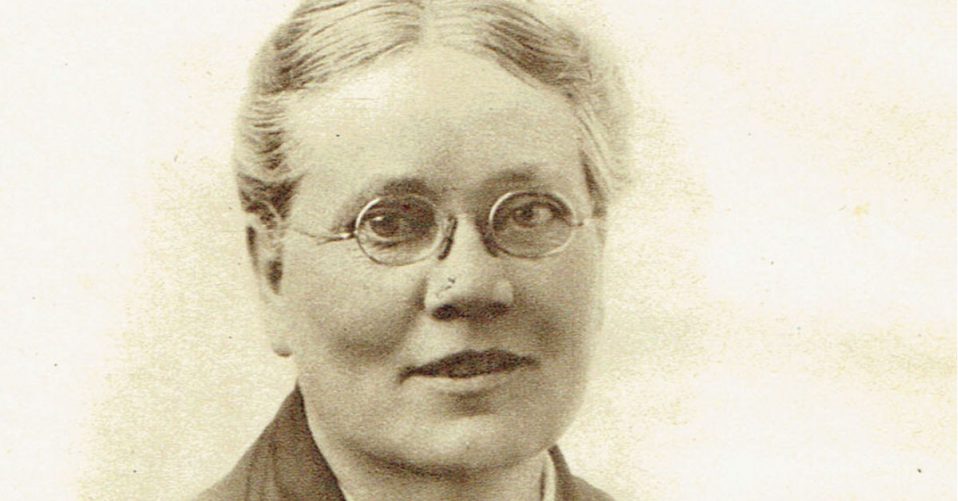By: Graham McDonald
Our History and the Christian Connection
The Queensland Kanaka Mission had received a request for help from a place where cannibalism is very much alive. Who would be willing to go and maybe risk their life to help tell the cannibals about the love of God?
In 1904, a tall, slender, well-dressed woman stepped ashore on the cannibal-infested island of Malaita, in the Solomon Islands group. She was the first European woman to visit the island, and she came in response to a plea from a local Christian pastor, Peter Ambuofa.
The woman’s name was Florence Young. She was born in Motueka, New Zealand, in the year 1856. Her parents were strong believers in Jesus and they imparted these teachings to their daughter. Her life became interwoven with the Kanakas after she moved to Bundaberg, Queensland, in 1882 to live on the family plantation.
From 1868, the demand for cheap labour on the sugar plantations of northern Queensland had led to the introduction of 62,000 Pacific Islanders, known as Kanakas (from the Hawaiian word for “man”). These Kanakas were recruited from the Melanesian group of islands under a system that became known as “blackbirding.” Some Melanesians went of their own free will, but others were taken by force. They were often treated very badly, and some died.
Florence Young was a very determined young woman, with a love for the Word of God. It is said that she would read through the entire Bible at least twice a year. She was told that the Kanakas were animals and could not be taught anything. Refusing to be put off, she started schools for them in which the Bible was the foundation of the curriculum, and salvation was put ahead of civilisation or education. In her own words, “I did not know how to teach, or where to begin. But I remember taking a chrysalis . . . to try and explain to them the fact of the resurrection and of a life beyond the grave . . . Inexperienced, keenly feeling my own impotence, and with no human helper, I was cast utterly upon God for guidance. And He taught the teacher and the scholars.”
Out of these experiences was born the Queensland Kanaka Mission, which soon had 19 missionaries, and many more native evangelists, in 11 centres. Many thousands were embraced the teachings of Jesus.
One of these converts was Peter Ambuofa, who returned to Solomon Islands in 1894, and established a Christian community at Malu’u. At first, he was shunned by his relatives, but, according to tradition, a series of miracles convinced them that Peter’s God was the true God, and they became followers of Jesus.
One of Peter’s more humorous actions was to attach a copy of a Scripture verse to a tree. The verse read, “For God so loved the world, that he gave His only begotten Son, that whoever believes in Him should not perish, but have everlasting life.” (John 3:16). When asked what use this would be, as very few of the local people could read, he replied, “I think – might God He see, and – might devil he see – and, might he say, ‘Eh, man belong God here, more better I clear out!’”
Peter Ambuofa was uneducated and had some confusions regarding Christian teaching, so he asked the Queensland Kanaka Mission for some help, and that was why Florence Young led the party of missionaries to Solomon Islands in 1904.
In the meantime, the newly-created Australian federal government had decided that the Kanakas should all be sent back to their home islands by 1906 as part of the White Australia policy. The news that the Kanakas were being sent back to their homelands, and that some were being martyred because of their Christian faith, gave a new urgency to the mission, however. In 1904, at the Katoomba Convention, in New South Wales, the Solomon Islands Mission (later the South Sea Evangelical Mission) was formed.
From 1905 – 06, a wonderful revival broke out amongst the remaining Kanakas in Queensland. This was God’s way of ensuring that those who returned to the islands would be bold in prayer and in witnessing. Indeed, the memory of that revival has been kept alive to the present day and has contributed to more recent moves of God in the Solomon Islands in 1936 and in the 1970s. Christians from Solomon Islands have emphasised prayer and intercession, holiness, and a vision for taking the Gospel back from the “Uttermost parts of the Earth” to Jerusalem.
Article supplied with thanks to DIDUNO. The DIDUNO Network is a group of people dedicated to and passionate about educating and informing the next generation of Australians of our Christian heritage.




